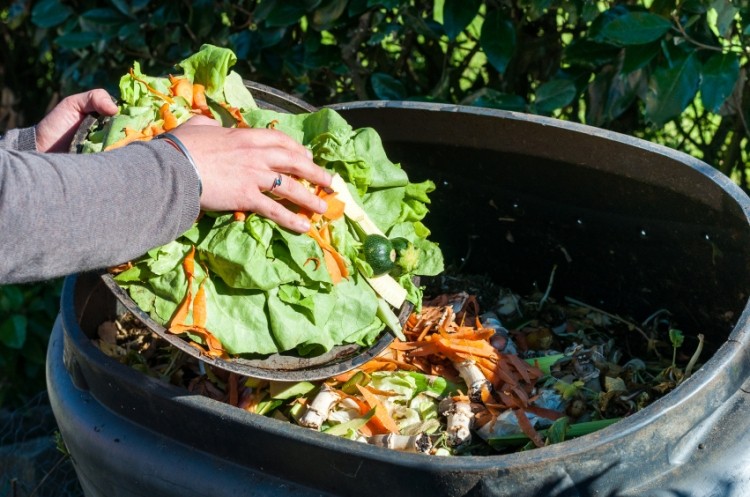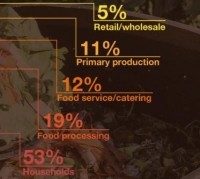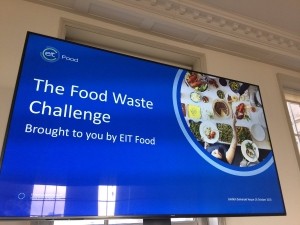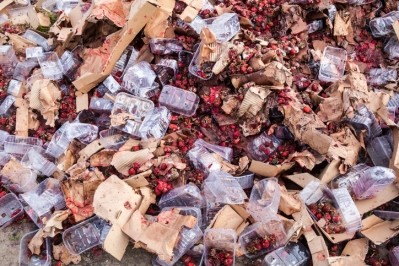How 'behind the scenes’ efforts can help address consumer food waste

Each year, roughly 1.3bn tonnes of food is lost or wasted. This equates to a monetary value of almost €870bn. At the same time, food poverty is all around us. In the European Union alone, an estimated 55m people cannot afford a quality meal every second day.
According to figures from the EC, 55% of food waste actually occurs in the home. In the UK, food waste costs the average family of four £800 per year.
This level of food waste has significant implications for the environmental footprint of food production Jenny Carr, citizen campaign project manager at waste NGO WRAP, stressed at a European Innovation and Technology Food (EIT-Food) event on food waste last week.
Outlining the scale of the problem, Carr said: “When we talk about food waste we tend to focus on the waste itself…That is the tip of the iceberg. It is the resources bringing things to our plates that are wasted.”
Studies estimate that food waste in Europe generates 186m tonnes of CO2-equivalent annually – 15% of the total impacts from the entire food supply chain.
While most food waste occurs in the home – outside the food industry’s direct sphere of control - it is nevertheless incumbent upon the industry to figure out innovative ways of reducing consumer-level food waste.
Supply chain innovation
Retail – a sector that accounts for just 5% of food waste in Europe – has spearheaded efforts to tackle the issue.
Mark Little, head of food waste reduction for Tesco, revealed that new supply chain technologies, combined with increased collaboration – the “human element” – have been crucial to Tesco’s own efforts to combat food waste.
“Tech does have a key role to play but it is only part of the solution. We have seen this in technology introduced in our own supply chain and operations,” he observed pointing to initiatives such as Tesco Connect, the company’s forecasting and ordering platform.
Importantly, Little said, enough flexibility is built into the system for Tesco to respond to unforeseen events, such as an unexpected ‘crop flush’. In this instance, suppliers can call Tesco and explain there is an oversupply issue. A solution, such as running in-store promotions, can then be found.
Tesco believes that supply chain innovation can also help solve the issue of consumer food waste. “There are a range of solutions. What has been important is taking a value chain approach from farm-to-fork. By shortening the food chain it means customers receive fresher products,” Little said at the Future Food Tech summit in London last Friday (19 October).
Five years ago, Tesco committed to reduce food waste in its own operations - and in consumer's homes. It is the first UK retailer to publish food waste data and, with 25 of its largest suppliers, the group announced a joint commitment to adopt SDG target 12.3 - to halve per capita food waste by 2030 - as well as pledging to measure and publish food waste data for supplier operations and act to reduce food waste farm to fork.
According to Little, this strategy has given consumers an extra two days of freshness in the home on produce items. Another supply chain tweak Tesco introduced was the move to stop trimming its green beans, providing the fresh product with a longer shelf life.
“We look at what we can do behind the scenes to help people reduce food waste in the home.”
Rose Price, head of grocery buying at UK online retailer Ocado, also stressed the need to deliver maximum freshness to consumers so that they have as much time as possible to use products before they spoil.
“Half of our shelf life is given to the customer,” Price explained. This is achieved through Ocado’s unique no-store model and distribution technologies that provide a quick turnover in the company’s fulfilment centres, depots and warehouses. “Eighty per cent of products are already sold before they come to our warehouse,” Price revealed at start-up festival Bread and Jam.
Ingredient innovation
Merete Faergemand, director of food protection and incubation R&D at Novozymes, believes that product formulation can also contribute to ‘behind the scenes’ efforts to cut in-home food waste.
Biotech company Novozymes develops enzyme-based solutions to combat spoilage. “Manufacturers need to look at keeping [food] fresher for longer,” she insisted.
For instance, a lifecycle analysts from Tesco found that 34-44% of all bread is wasted. Faergemand suggested that product formulation can be part of a solution to this: “If you take bread, a lot of it is discarded before it is mouldy because it is stale… We do have enzymes that can keep bread fresher, softer for longer.
“There is a role of tech ensuring food is of the highest quality for longer. Higher eating quality and higher microbial quality.”
Faergemand concurs that increased collaboration up and down the supply chain is necessary. “I represent a biotech company. We are leaders in enzymes. We are very specialised. For our products to have an impact on food waste we need more partnerships… We don’t have consumer insights… We need insight into processing in the food value chain.”
Calls for collaboration grow: data sharing key
As calls for a collective approach to food waste gain steam, the message that data sharing is an important aspect of this is coming through loud and clear.
According to Thomas Farrell, environmental and sustainability manager at ABP Beef, there is an evident “business case” for manufacturers to minimize food waste in their own operations. However, when products go through to retailers and ultimately consumers, food makers are limited in their ability to control the narrative.
“Everything has a business case, it is what keeps your business running,” he said during the panel discussion on food waste organised by EIT-Food last week (16 October). “We have always looked at production, it was always key. By minimizing your waste you are maximising production.”
However, data sharing from further up the supply chain has not always been an option, according to Farrell’s experience. “On the customer side, we need data. It is starting to slowly and surely come back."
The food industry needs to find new ways of both gathering and sharing data to form an effective collective response to food waste.
“This is a systemic issue. Just by removing one thing you aren’t going to solve everything,” Simon Davis, head of partnerships at data group Agrimetrics, observed. “In some areas of the supply chain there is a lack of data… In other areas, there is data but it is about joining it up to change behaviour.”
For Davis, an important question is how to get companies – all with their own agendas – to openly share data. “How do you incentivise data? How do you bring together data that creates win-win-wins around food waste?”











